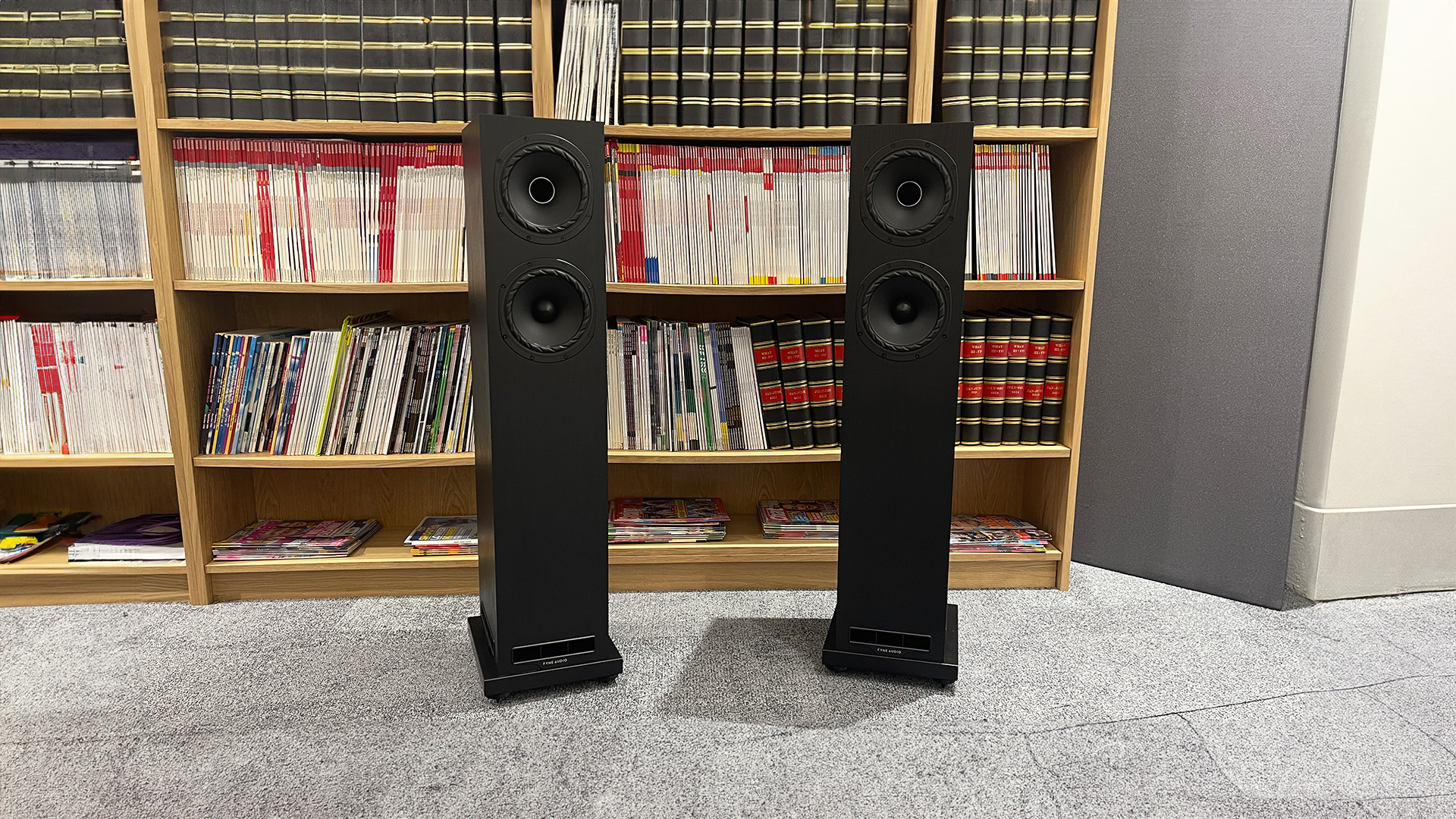What Hi-Fi? Verdict
Fyne’s F501E are terrific performers for the money and are good enough to upset the established class leaders
Pros
- +
Cohesive, expressive and entertaining presentation
- +
Taut and tuneful bass
- +
Even dispersion characteristics
- +
Solid build
Cons
- -
Only available in a black ash finish
Why you can trust What Hi-Fi?
Fyne Audio has been astonishingly aggressive with the pricing of its new F501E floorstanders. They are part of the new F500E entry-level range, which in effect replaces the established and much-liked budget F300 series. We all know the price of just about everything has gone up massively in recent years, so it is refreshing to find that this latest 501 model retails for less than the original did back in 2018. That first version is currently still on sale for around £1700 / $2875.
It is fair to acknowledge that the older floorstander was aimed at a more premium part of the market when introduced. It is wrapped in a lovely real wood finish, rather than the black ash vinyl of the new one, and has classier cosmetic detailing. But, we still find it impressive that this new ‘E’ model can boast the same range of in-house technologies at such a saving.
Design
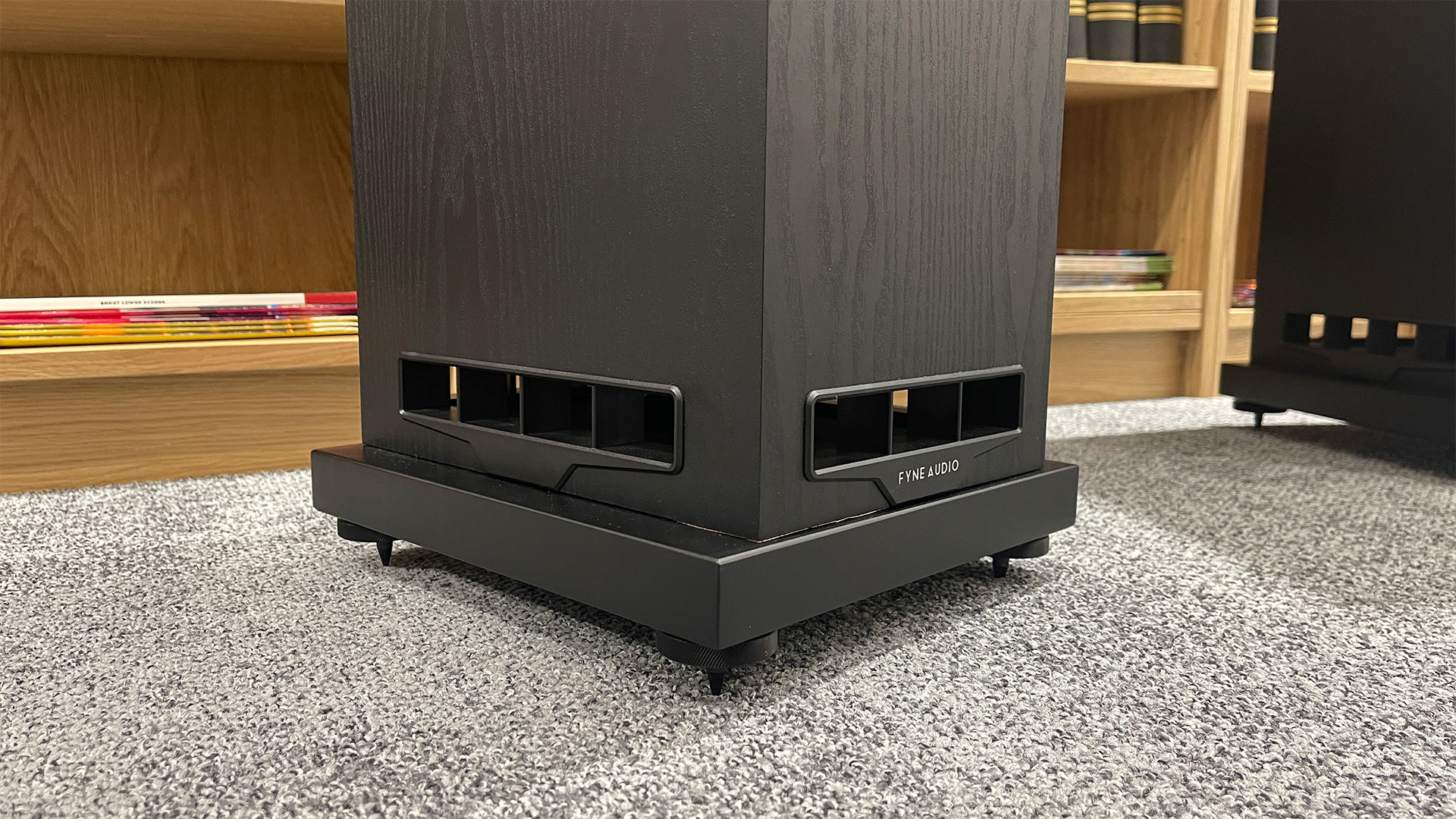
The big news here is that Fyne’s trademark Isoflare driver array, where the tweeter sits in the throat of the mid/bass unit, has trickled down to its entry range for the first time. In this case, it is a 25mm titanium compression dome tweeter partnered with a 15cm multi-fibre mid/bass unit with the crossover point set at a relatively low 1.7kHz.
The mid/bass driver’s rubber surround exhibits the same fluting as seen on the company’s more upmarket products; this shape is claimed to terminate the cone more effectively, reducing distortion and improving clarity.
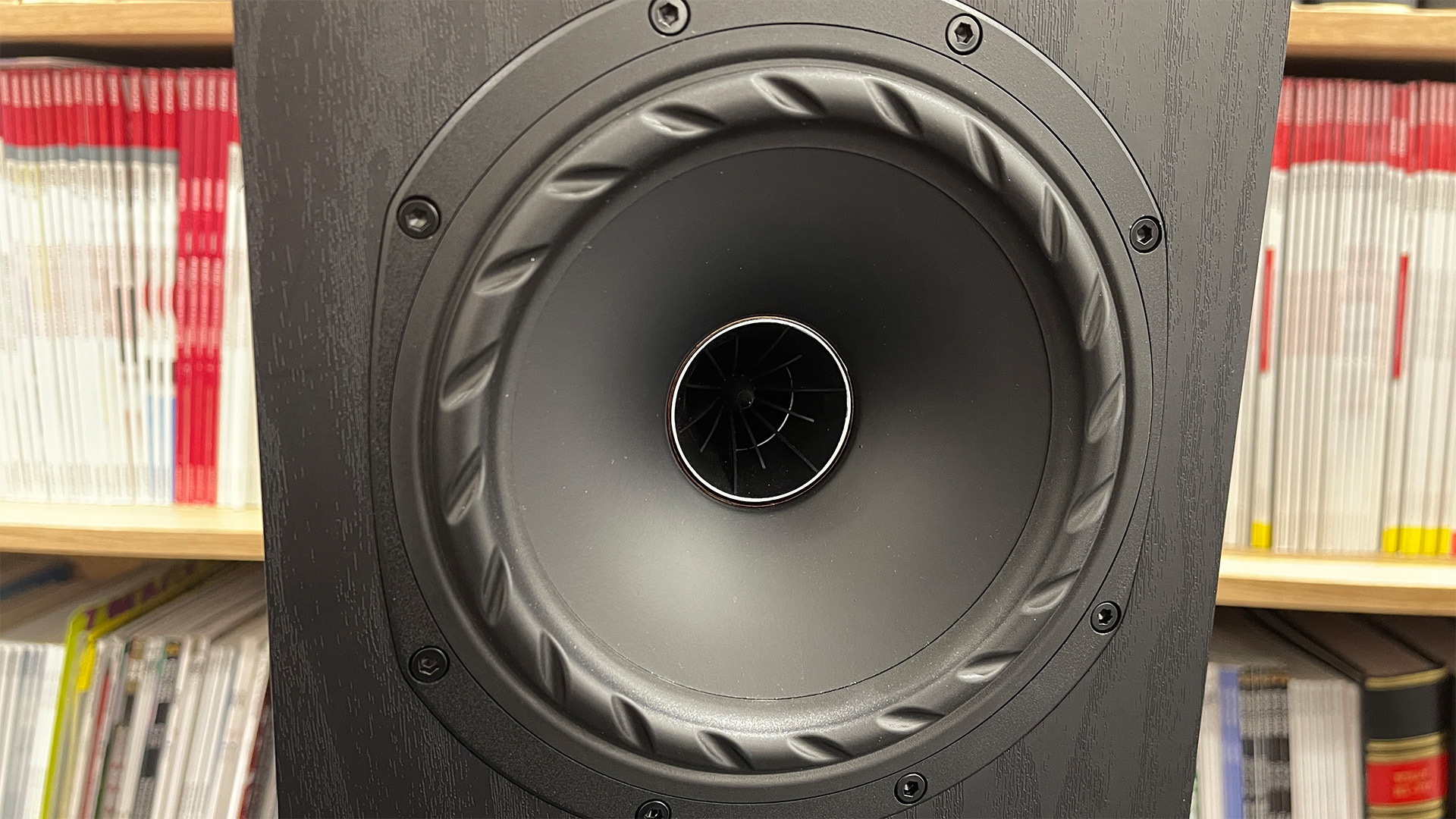
The F501E is a 2 1/2 way design where the lower 15cm multi-fibre driver, a dedicated bass unit that rolls in below 250Hz, is tuned by a downward firing port arrangement called Basstrax. Here, the port fires onto an upward-facing cone that disperses the sound evenly through 360 degrees. Look just above the plinth and you will see the bass vents on all sides of the cabinet. That even spread of bass is claimed to make the speakers less fussy about room placement, and that proves to be the case. Even so, our samples still sound best around 70cm out from the rear wall and well away from the sides in our 3 x 7 x 5m (hwd) test room.
General build quality is as solid and neat as expected at this level. However, these speakers are only available in a black ash vinyl wrap. The lower production cost of only having a single finish is a part of the reason Fyne can achieve such an aggressive price for the F501E. The finish itself is decent, but to our eyes looks a little drab next to classier price rivals such as the Q Acoustics 5040/5050 duo.
Compatibility
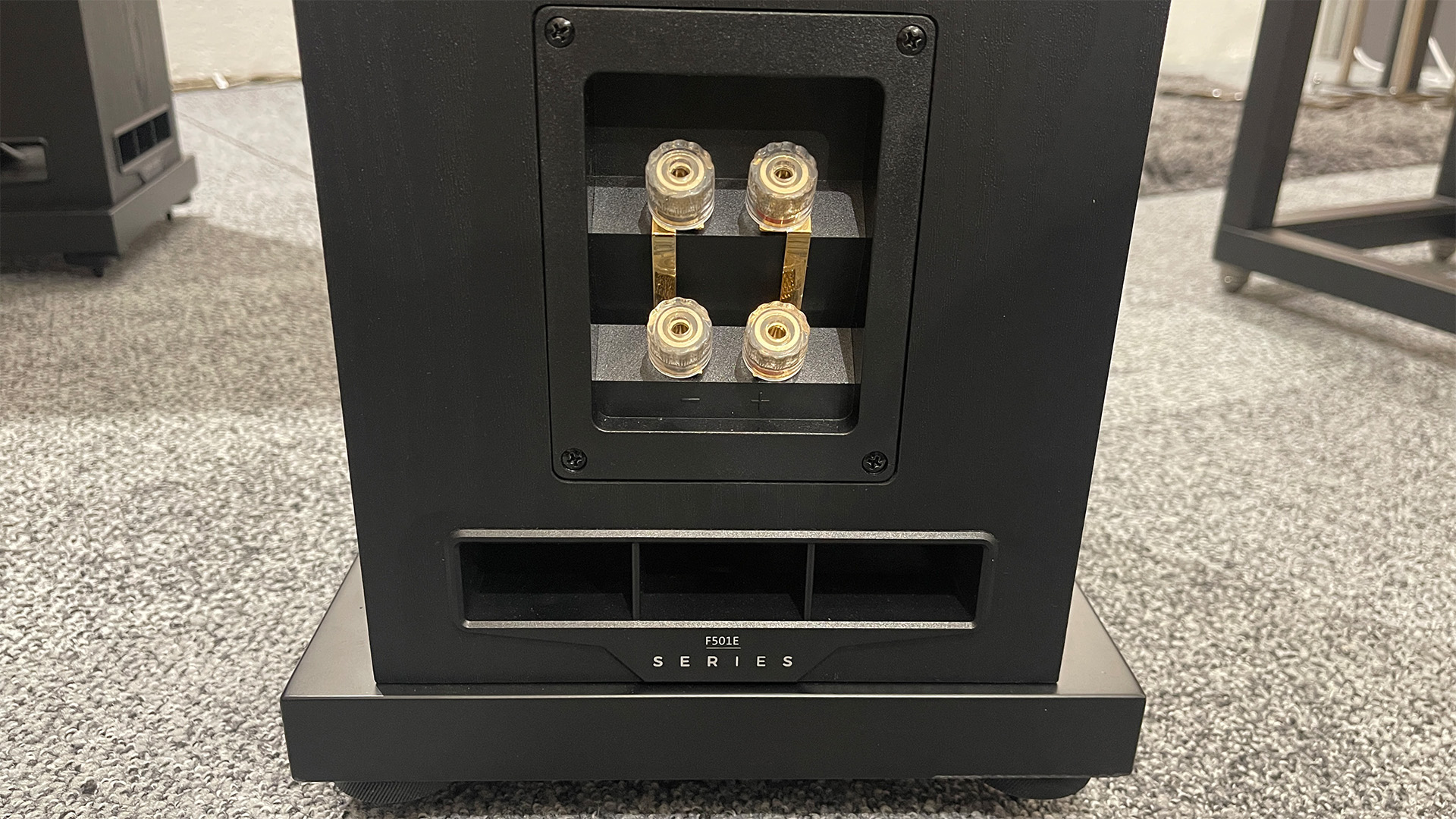
Speakers at this level have a difficult balancing act to perform. They should be unfussy enough to sound decent with modestly-priced systems but still have enough sonic stretch to show improvements when the partnering electronics are upgraded. The Fynes’ sensitivity is rated at 90dB/W/m and their nominal impedance is claimed to be an entirely conventional 8 ohms. We try a range of amplifiers from Arcam’s A5 (50 watts per channel) and Naim Nait XS3 (70 watts per channel) to PMC’s Cor (95 watts per channel) without issue. For performance benchmarking, we have the Award-winning Q Acoustics 5050 towers on hand, alongside KEF’s similarly-priced LS50 Meta standmounters, and for a broader context, PMC’s more expensive Prodigy 5.
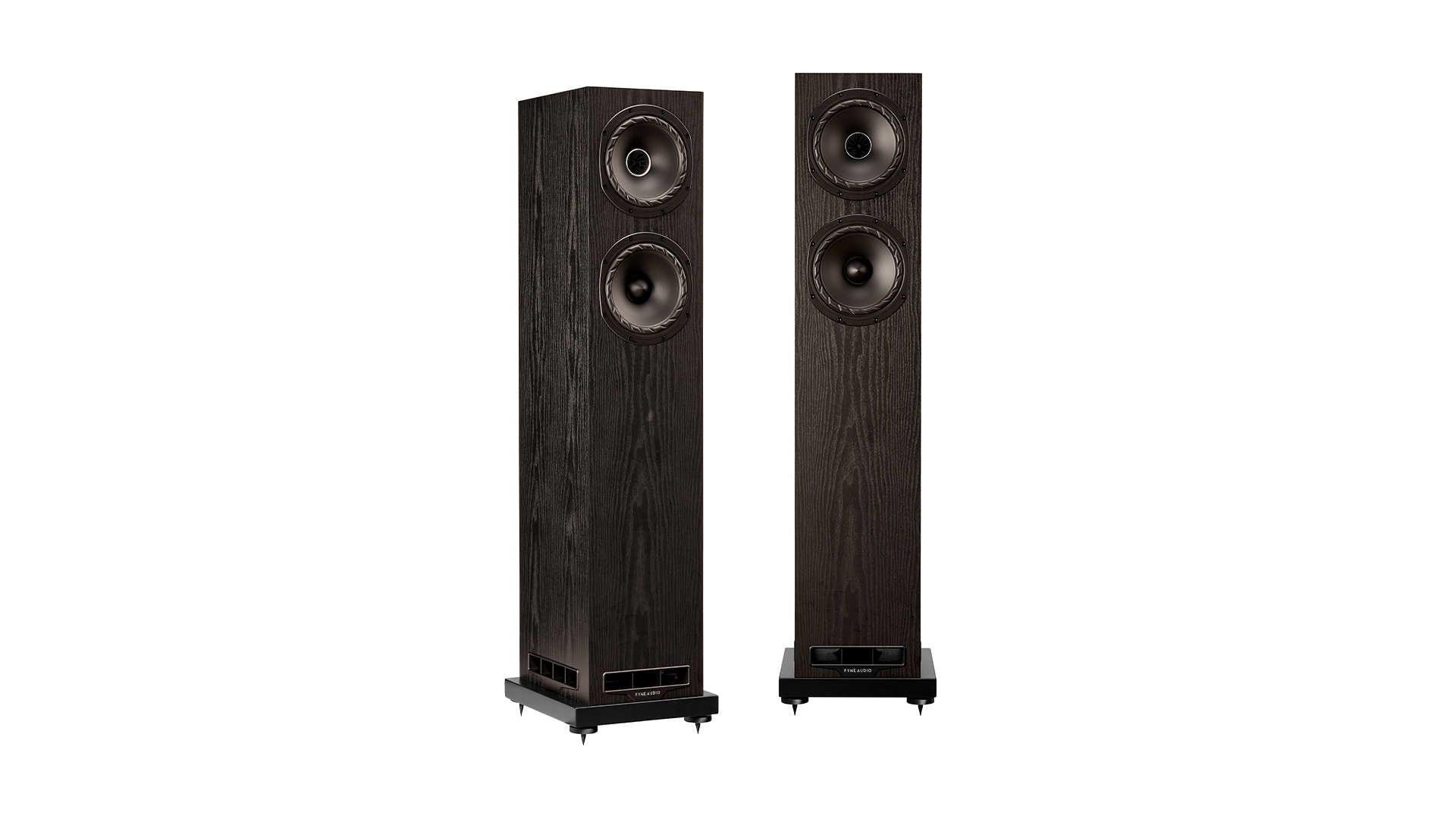
Type Floorstanders
Drive units Isoflare array (25mm titanium compression dome/15cm multi-fibre mid/bass), 15cm multi-fibre bass
Ported? Yes (downward)
Bi-wire? Yes
Impedance 8 ohms
Sensitivity 90dB
Dimensions (hwd) 98.4 x 25 x 29.4cm
Weight 18.9kg
Finishes x 1 (black ash)
It doesn’t take long to realise that the F501E are hugely capable. They do the basics well by offering good insight and delivering decently balanced tonality. Our experience of Fyne’s more affordable models, capable as they have been, is that they haven’t always had the most refined treble. But, we’re pleased to note that the F501E does a pleasing job in this respect. It avoids edge and undue harshness at higher frequencies, even when provoked by less-than-perfect recordings. This is a huge plus for those who choose their music on merit rather than recording quality.
That doesn’t give the user a free pass on using capable partnering equipment, though. While these towers don’t necessarily force a spotlight on any sonic flaws upstream, like any capable speaker they will only shine when fed a good-quality signal.
Sound
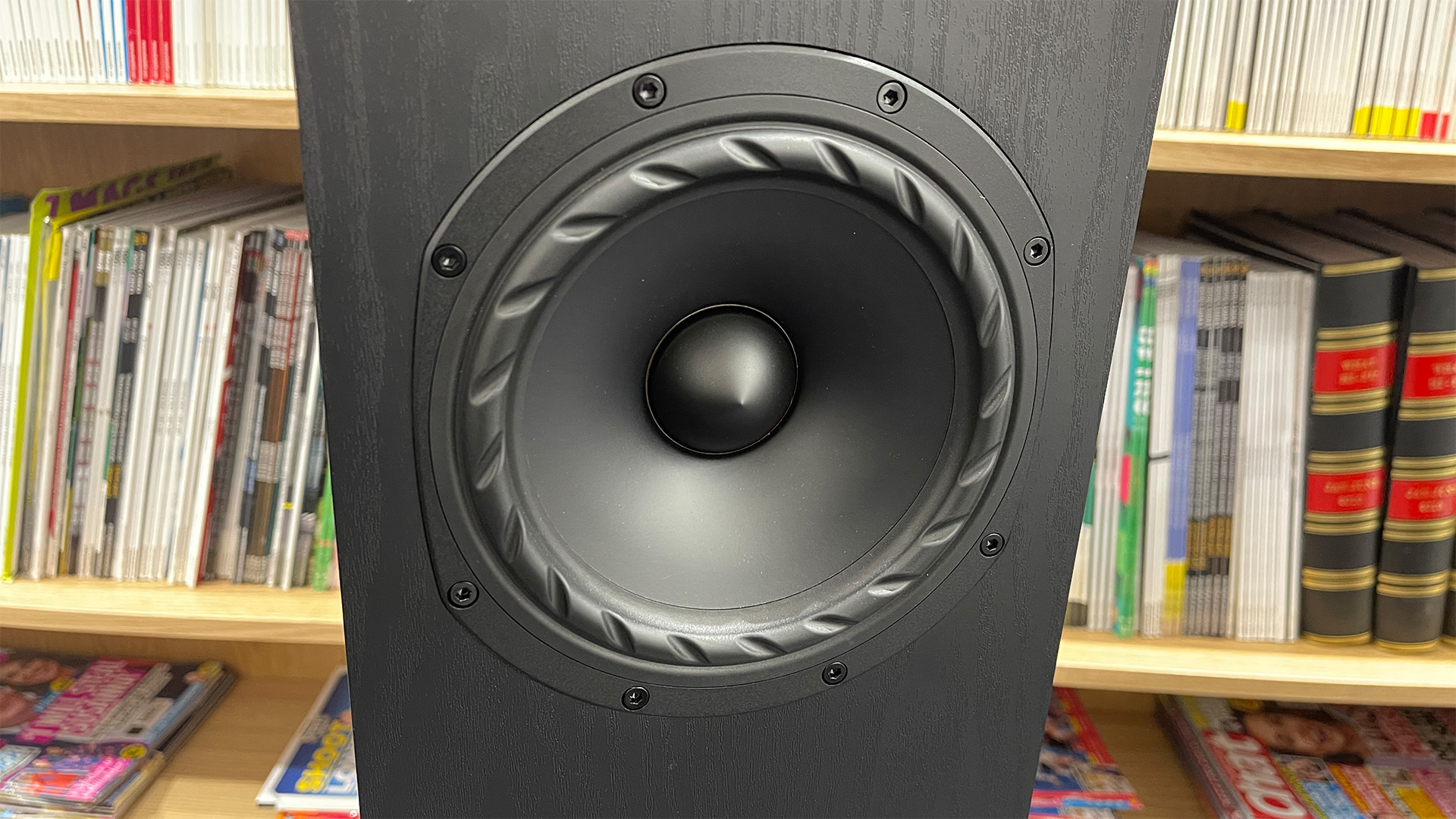
Given such a signal, their dynamics are strong and delivered with natural fluidity. As we listen to Hans Zimmer’s Interstellar OST it is hard not to be impressed by the clarity on offer and the Fynes’ ability to organise the mass of instrumentation on Cornfield Chase. These floorstanders stay composed when the production becomes dense and deliver the music’s growing intensity, as it reaches the end, with conviction.
One of the advantages of a coaxial configuration such as the Isoflare array is that it disperses sound more consistently as we move off-axis. This trait pays dividends in the F501E’s focused and layered stereo imaging and the way its soundstage remains stable even when we move away from the (relatively wide) sweet spot. In comparison, the more conventional Q Acoustics 5050 become a little more uneven when we do so.
We like the Fyne’s sense of scale and are impressed with the low-end authority and punch they generate on demand. Bass is taut, tuneful and articulate by class standards. We push the volume levels northward to see how the F501E cope – they tick that box confidently at anything that passes for normal listening levels.
These towers are a fun listen too, as a trip down memory lane with The Low End Theory from A Tribe Called Quest proves. The F501E are fluid and expressive. They track rhythms with determination while communicating changes in musical momentum in a natural and convincing manner. Having the acoustic centres of the tweeter and mid/bass aligned helps with integration; the result is a crisp and forthright performance with vocals that captures nuances and subtle shifts in intensity superbly. The rival Q Acoustics 5050 sound a touch disinterested and mechanical in contrast.
Through the test process, we cover large swathes of our music collection from Dvorak’s New World Symphony and John Coltrane’s legendary Giant Steps set to Hit Me Hard And Soft by Billie Eilish, and the Fynes never miss a beat. They have the sophistication and muscularity to convey the majesty of a full-blown orchestra yet can still convey the intimacy of Eilish’s Wildflower superbly.
Verdict
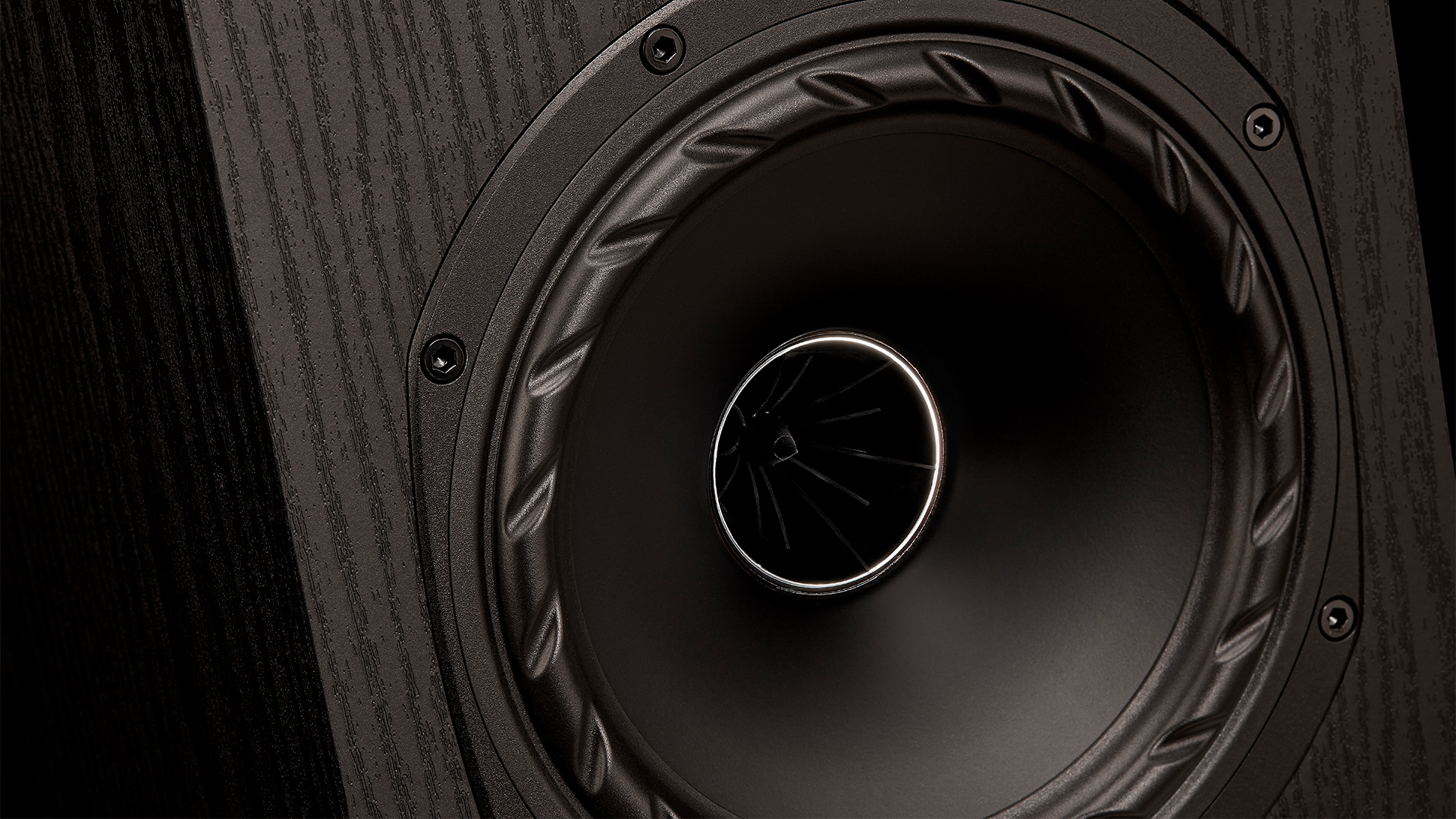
If you can put up with the less-than-inspiring finish then there is very little to dislike here. The F501E is a talented all-rounder that has a range of sonic abilities that are hard to better at this price. Partner these floorstanders with a bit of care and we think you’ll be as impressed with them as we are.
First reviewed: February 2025
SCORES
- Sound 5
- Build 4
- Compatibility 4
MORE:
Read our review of the Q Acoustics 5040
Also consider the Q Acoustics 5050
Read our Dali Oberon 5 review
Best floorstanding speakers: budget to premium models tested by our experts

Ketan Bharadia is the Technical Editor of What Hi-Fi? He has been reviewing hi-fi, TV and home cinema equipment for almost three decades and has covered thousands of products over that time. Ketan works across the What Hi-Fi? brand including the website and magazine. His background is based in electronic and mechanical engineering.
- Harry McKerrellSenior staff writer
-
londonguy Shame they only come in that finish. Ive not had Black Ash since the early 90s.Reply
Wonder how they would compare to my Monitor Audio Silver 200 6gen -
checkbuzz I picked up a pair of the original F501's after comparing them to the 5040's. Truth be told there was no comparison, the 5040's simply couldn't compete on any level. TBH I had my heart set on the 5040's so it was kind of disappointing, but the fact that the F501's were on sale for £899 made it one of the easiest decisions I've ever made. I have no regrets. Fyne Audio make superb speakers and I'm sure these F501E's won't disappoint.Reply
